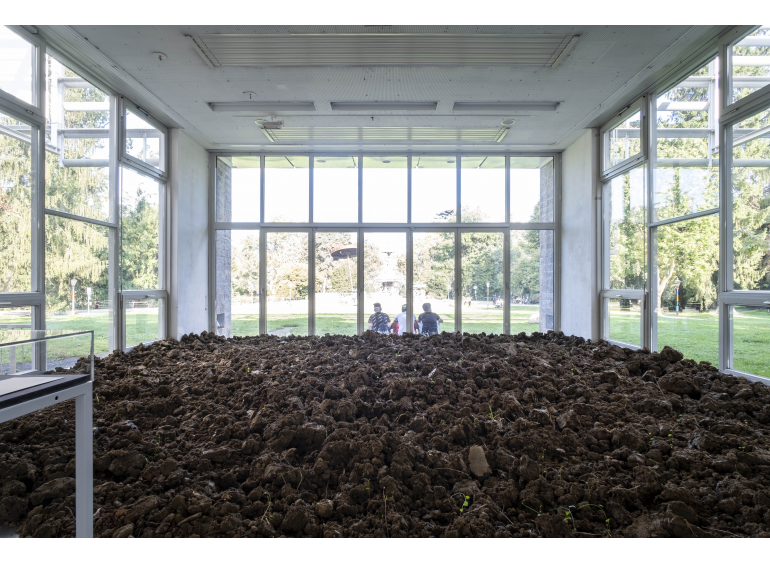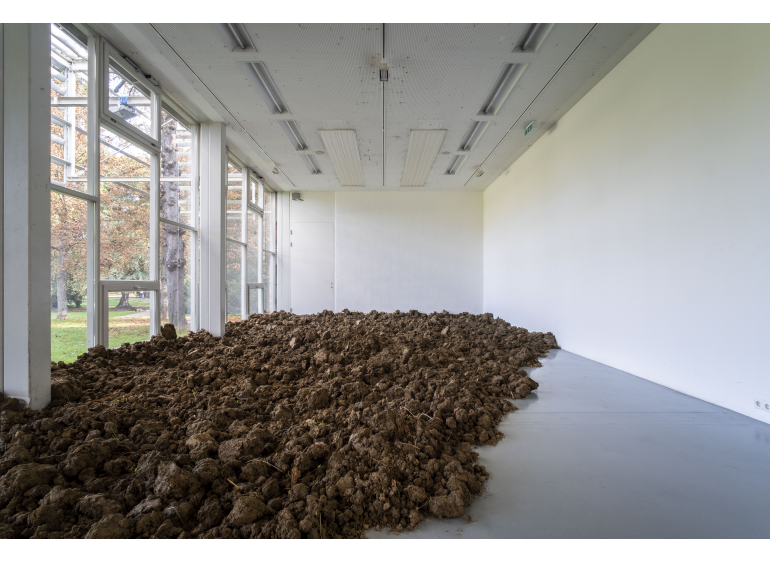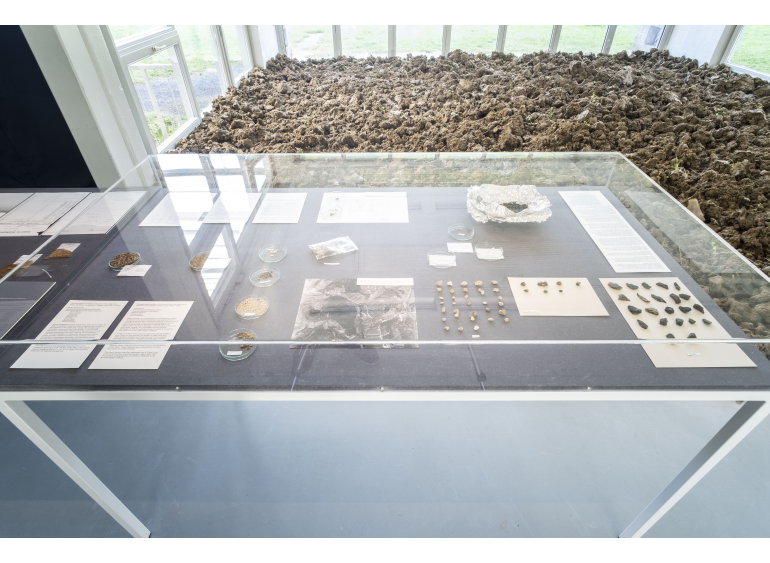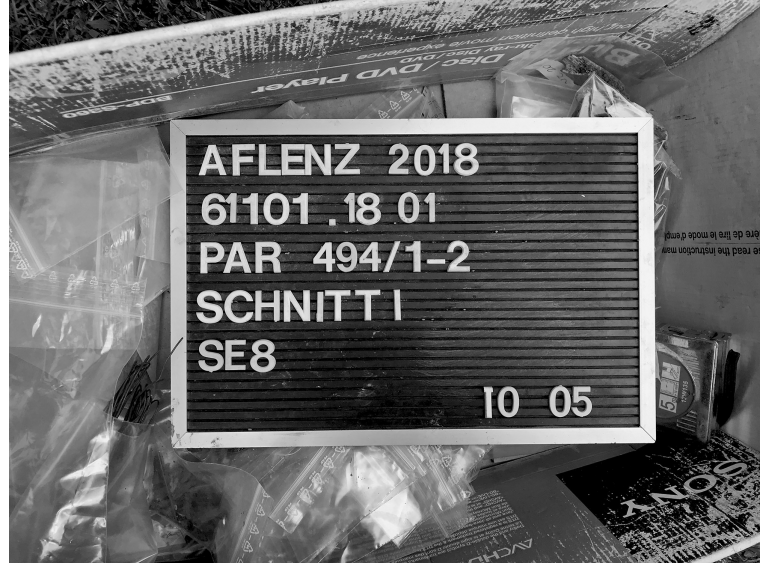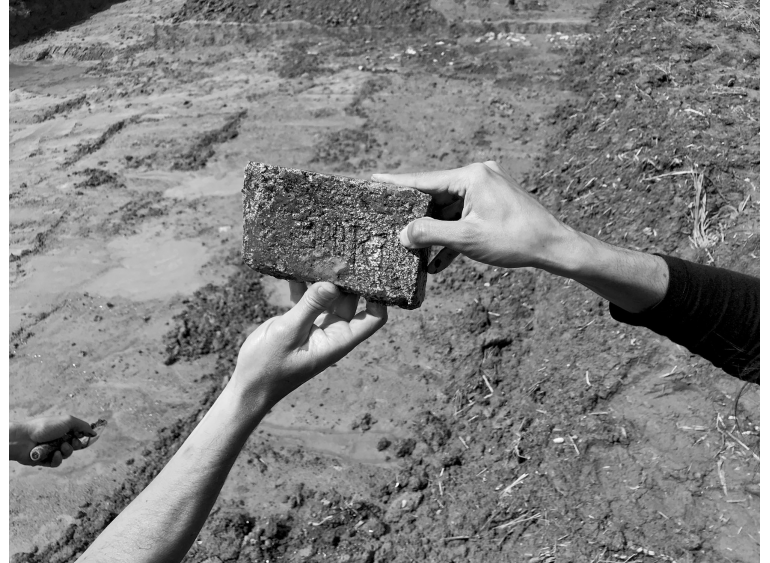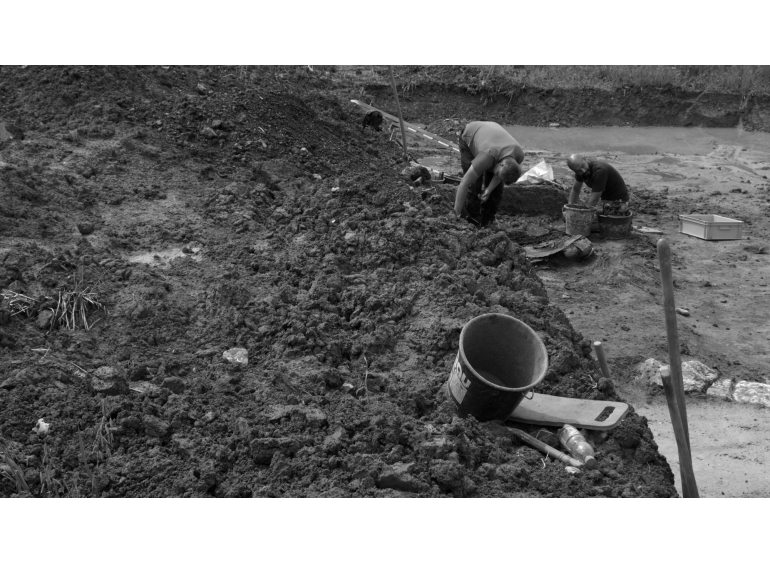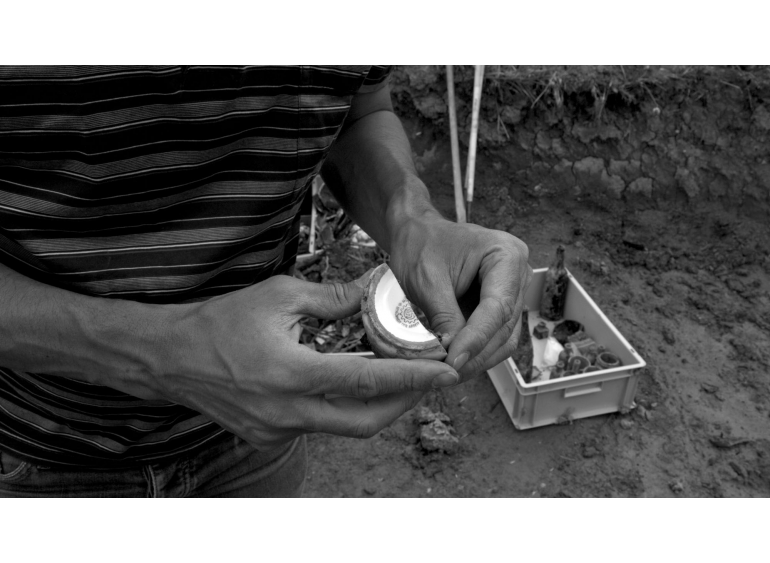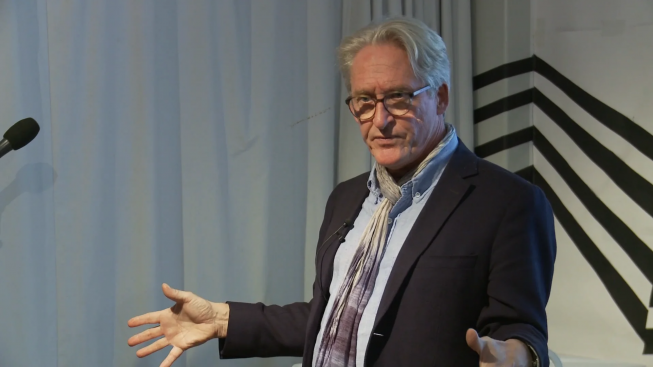Concentration camps like Auschwitz or Mauthausen are famous as sites that commemorate the atrocities of the Third Reich. However, less is said or remembered officially about the many crimes committed systematically in the network of labor camps and sub-camps, which were dispersed evenly across the regions of Nazi-occupied Europe during World War II. One such camp in the southern Styrian village of Aflenz an der Sulm is the focus of an ongoing research project by artist Milica Tomić. There, from 1944–45 inmates from Mauthausen worked alongside 2,000 regular factory workers from Graz, building campsites and adapting an underground quarry to suit the production needs of Steyr-Daimler-Puch AG, the main weapons producer in Austria during World War II. Nothing remains of the camp’s barracks today, whose site now is covered by an unassuming landscape of cornfields. Working along the lines of “reflexive” archeology, Tomić searches for a commemorative language for this (non)site, beyond official monumental aesthetics. Her specially developed project for steirischer herbst presents a first iteration of this work in progress. Soil excavated from the site of the forced labor camp is placed in the exhibition space. This non-monument is juxtaposed with the temporal nature of Tomić’s research into the dynamic relationship between the city of Graz and the sub-camp just outside the city—against a broader backdrop of war, labor, and the capitalist mode of production.
Milica Tomić
Exhibiting on a Trowel’s Edge. Research and investigative processes of Aflenz Memorial in becoming (2018)
21.9.–14.10.
Forum Stadtpark
Stadtpark 1
8010 Graz
Google Maps
Free with Festival Pass
Commissioned and produced by steirischer herbst
In collaboration with Institut für Kunst im öffentlichen Raum Steiermark (Institute for Art in Public Space Styria), Universalmuseum Joanneum; Marktgemeinde Wagna; Retzhof - Bildungshaus des Landes Steiermark; Verein COOP-EB; IZK Institute for Contemporary Art, TU Graz; Vienna Wiesenthal Institute for Holocaust Studies (VWI); Forum Stadtpark
Archaeological research, floatation, and general interpretation: Ana Bezić
Archaeological excavation and interpretation: Bernhard Schrettle
Archaeobotanical analysis: Đurđa Obradović
Research: Philipp Sattler
Production assistant: Fehim Durakovic
Camera: Simon Oberhofer, Milica Tomić
Drawings: Milica Tomić, Ana Bezić
Editing: Nataša Pavlović, Miloš Stojanović
Special thanks: Christoph Gutjahr, St:WUK-Kulturpark Hengist; Martina Trausner, St:WUK-Kulturpark Hengist; Wolfgang Paill, Natural History Museum, Universalmuseum Joanneum; Petar Milat, Multimedia Institute – net.culture club MaMa, Branimir Stojanović, Belgrade Psychoanalytic Society; Dubravka Sekulić, IZK Institute for Contemporary Art, Anousheh Kehar, IZK Institute for Contemporary Art
With the kind support of ERSTE Foundation; Vienna Wiesenthal Institute for Holocaust Studies (VWI)
